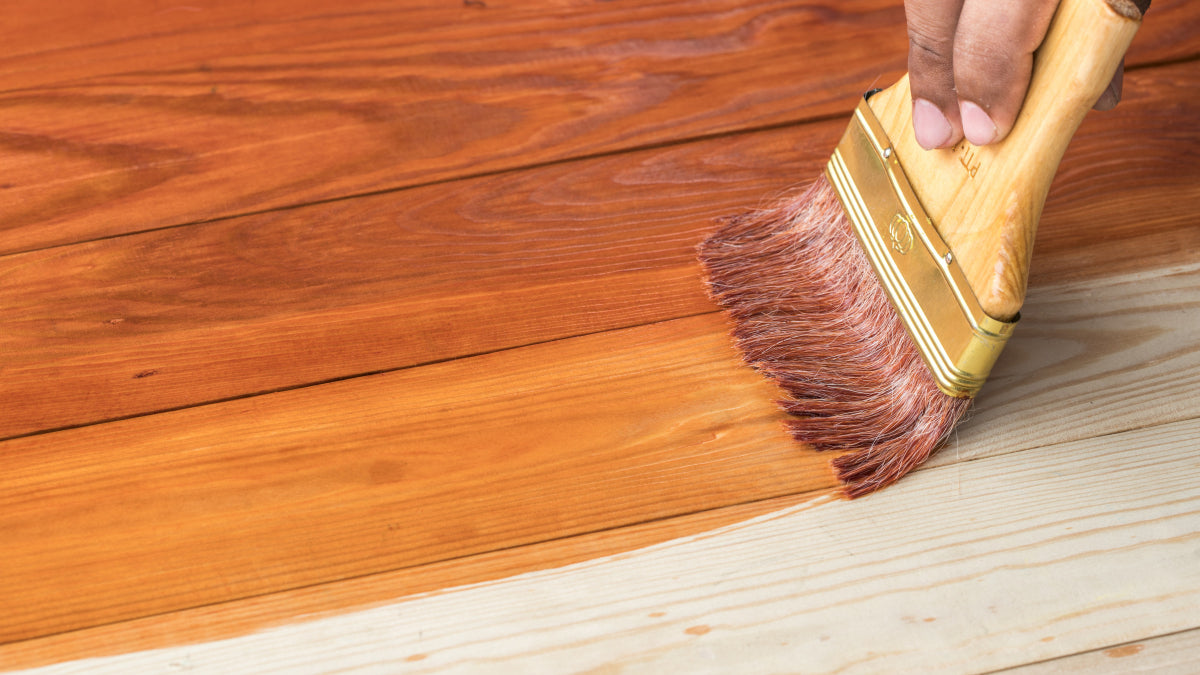Cleanup Comparison: PureColor Wood Stain vs. “The Others”
Toxic chemicals are usually just part of the deal when you’re working with wood stain to restore furniture. And even if the stain cans are kept in a safe spot, you can still be exposed to dangerous ingredients through skin contact, inhalation and spills. These days, more people are seeking out natural and eco-friendly wood stain brands to provide a safer environment for their families.
Most wood stains contain a high concentration of VOCs, or volatile organic compounds, which are highly toxic chemical ingredients that bind the stain with the wood. Even when handled with caution, VOCs enter the air and can have negative effects on the respiratory system. While standard stains are oil-based, PureColor’s low-VOC stains are water-based, non-toxic and eco-friendly with dramatically fewer VOCs, making it possible to reduce the risks and cleanup hassles at the same time. PureColor delivers the performance of a standard stain, but without the same high levels of toxicity.
If the better safety profile isn’t enough to get you to switch to a low-VOC stain, you may be sold by the difference it makes AFTER the job’s done. One of the terrific benefits of choosing a water-based, low-VOC formula is the comparatively simple cleanup.
Here’s a quick look at standard stain vs. PureColor’s low-VOC stain:
Oil-Based, Standard Wood Stain:
After all your hard work to apply the stain, you’ll need to dedicate another several hours to the task of removing any lingering product from the brushes, surfaces, floor or sink area. To eliminate all traces of the toxic, oil-based stain, you’ll need a solvent like turpentine or mineral spirits. Typically, you’ll need several rounds of soaking and shaking to get a clean brush, and some experts recommend a wire brush to comb all of the stain bits out of the bristles. Then soap, hot water, and more combing. It gets even more complicated if you’re trying to clean hardened stain, in which case you’ll need to suspend the brushes in lacquer thinner and soak overnight.
Water-Based, Low-VOC PureColor Wood Stain:
After applying a few coats of PureColor stain to reach your desired shade, take your applicator brushes to the sink and rinse with warm, soapy water. Wash hands, countertop, tabletop or any surface that the stain has touched with soap and water only. You can toss empty stain cans, bags, or boxes right it your trash receptacles, or rinse them out and place them in your recycling bin, since water-based product qualifies as non-hazardous waste. That’s it! The easy cleanup not only comes with the peace of mind of working with a safer substance, it’s a real time saver.
Whether you work on wood restoration jobs on the regular, or enjoy the occasional DIY staining adventure, the ingredients and easy cleanup appeal of PureColor’s low-VOC stains will make every project easier and safer.
Ready to stain your next wood chair, armoire, bench or end table? PureColor has a wide range of colors to choose from in our Clean Chemistry™ line of wood stains, with significantly less VOCs than standard stains.
**Learn more about VOC standards.

